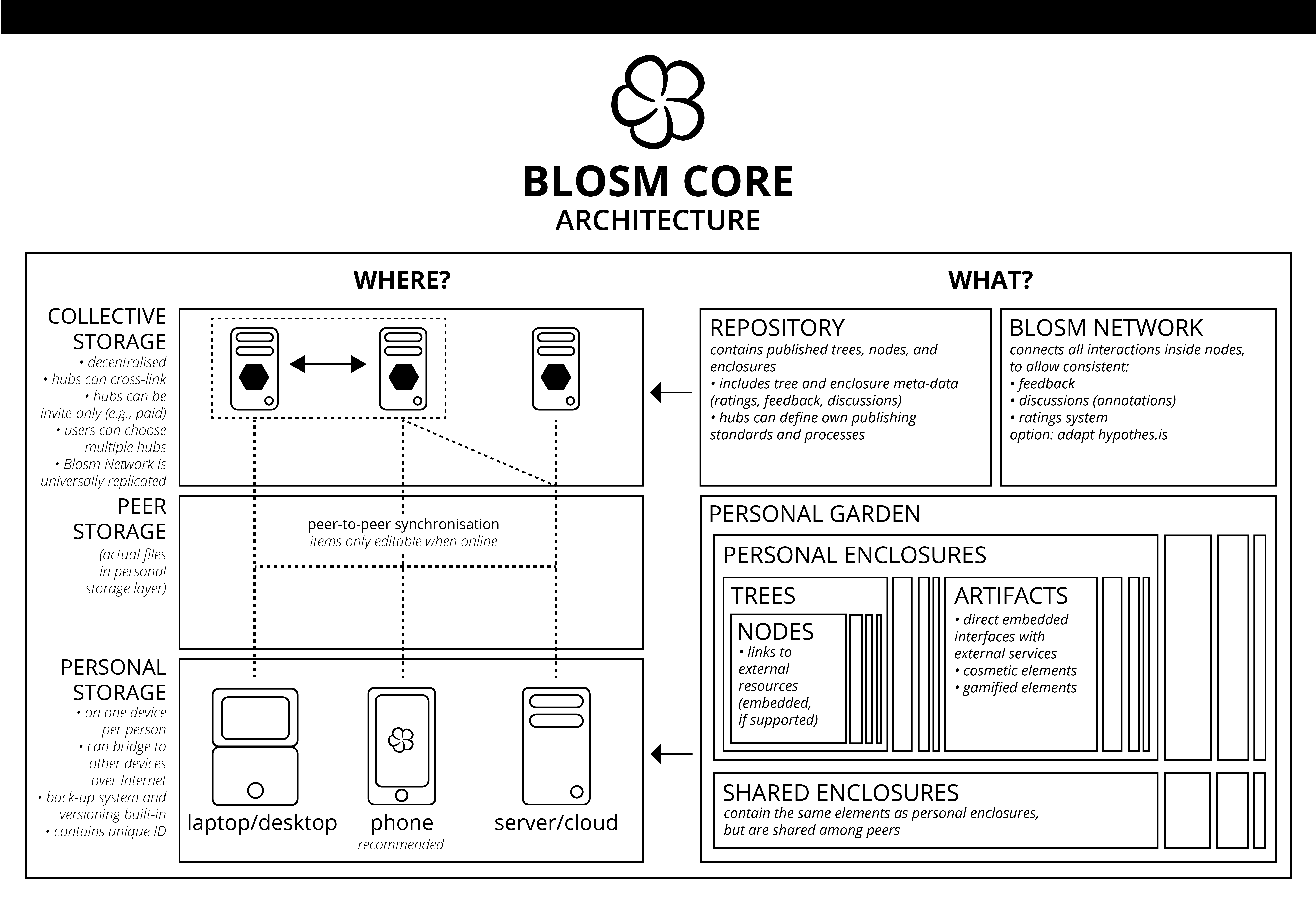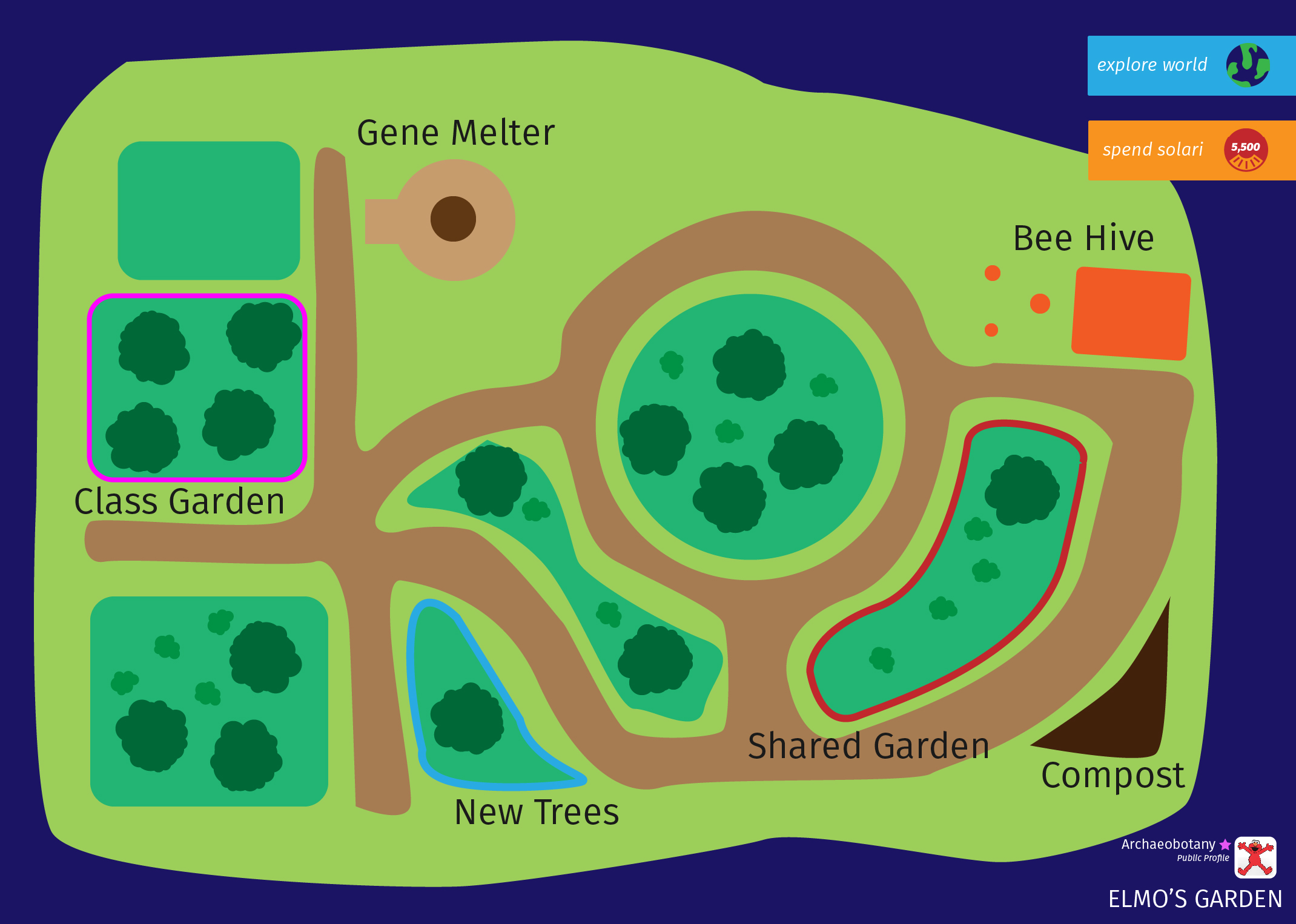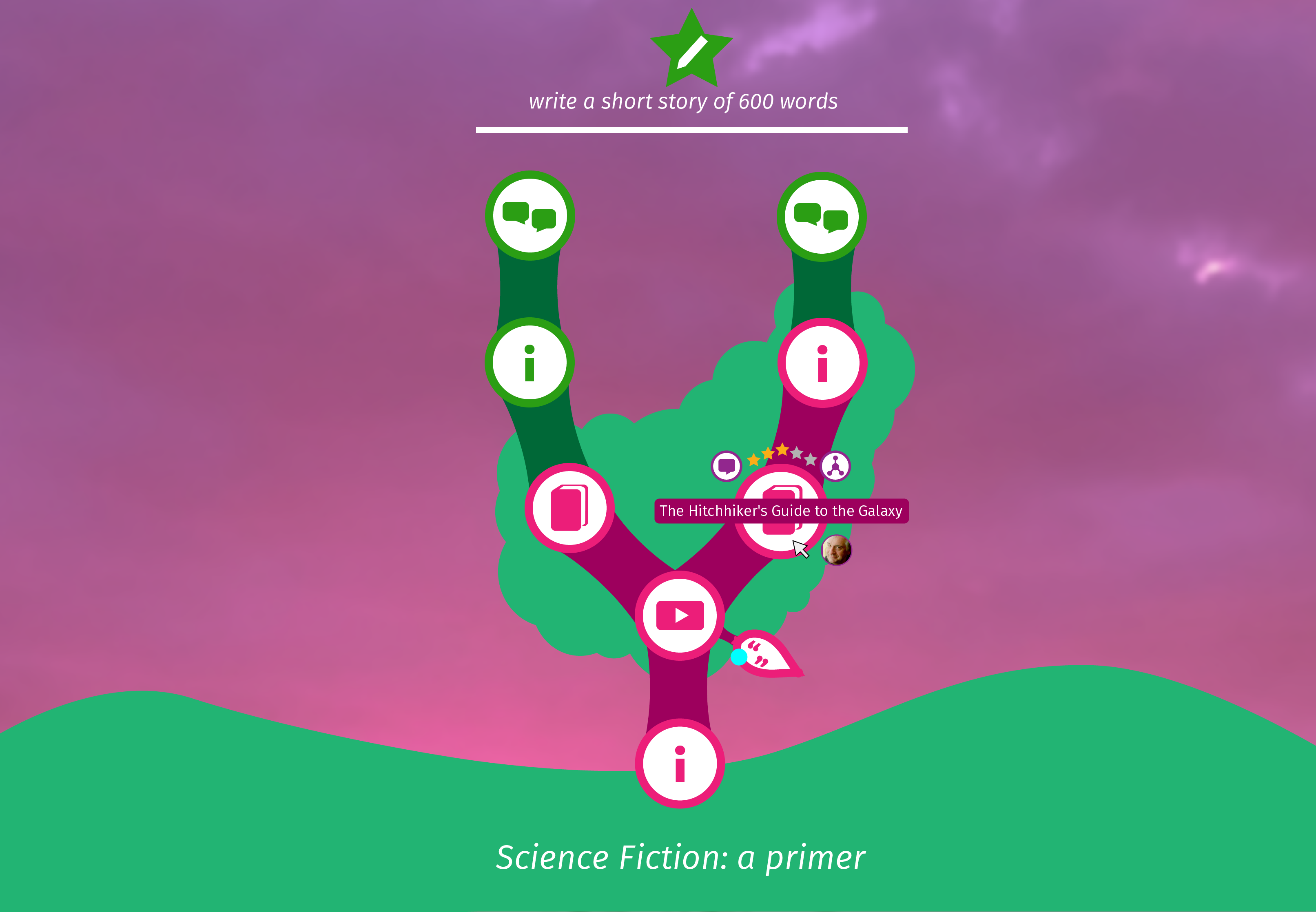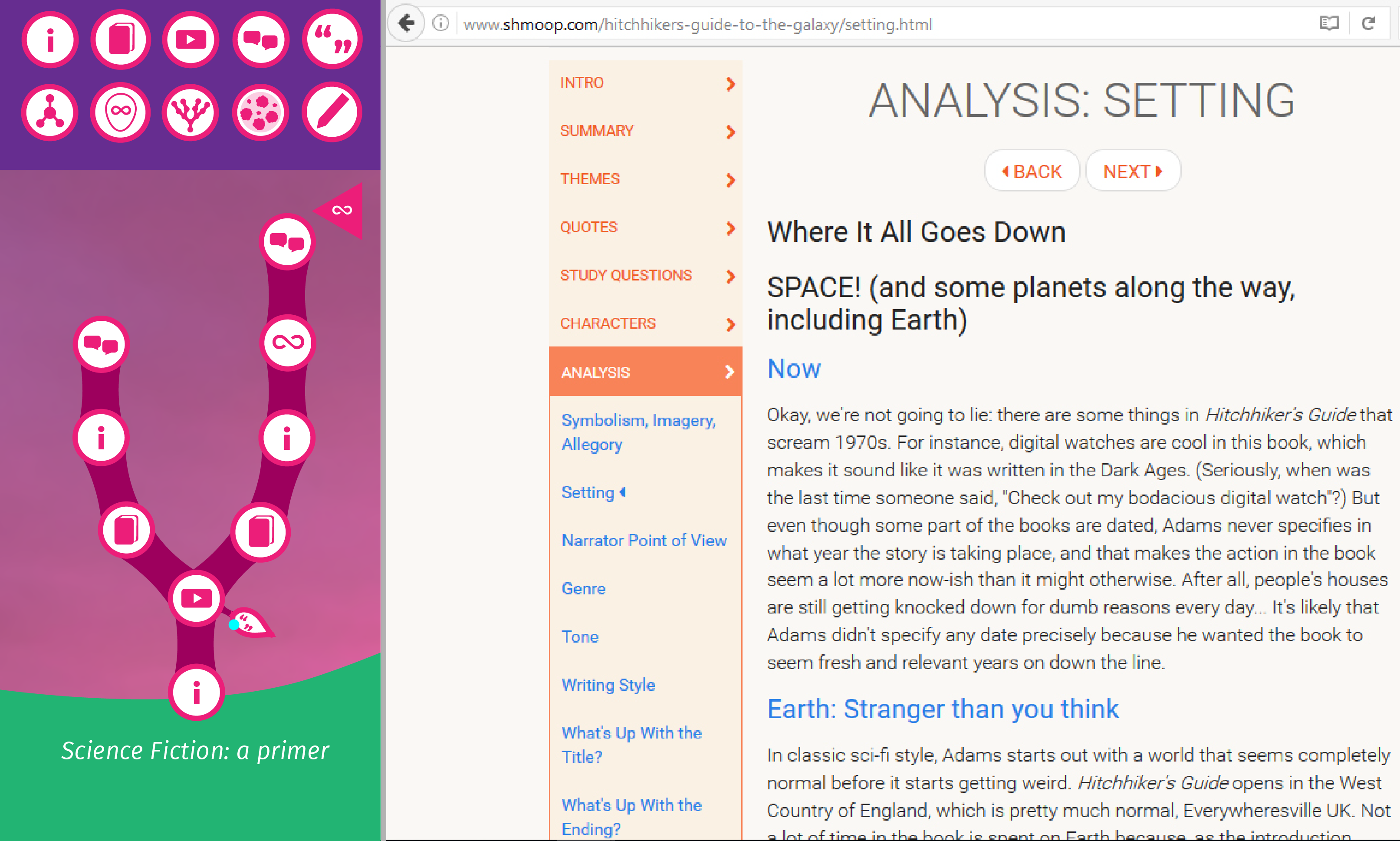Project Proposal 9: Blosm
Scope of Group Project
One direction of innovation is in learning interfaces. Pretty much all Learning Management Systems use lists to structure content, and demarcate courses strictly. This invites passive consumption by students inside the virtual space, as the system is managed by the teacher and is static. Small modules such as forums have not solved this issue.
One way to break this tendency is to radically change the design of the interface in order to give control to the learner first and foremost. All parts of offered content should be remixable, based on the actual learning journey of the individual student. This way, students can contribute to courses as they are happening rather than afterwards through evaluation forms.
Once promising direction is to take insights from embodied cognition and the Method of Loci to develop a two-dimensional virtual world where users can order their learning paths idiosyncratically. The metaphor of the Garden is useful here, especially in the light of graph theory: Trees of learning exist in a personal Garden (see images).
Project Goals
Main goal
Implement a spatial interface to interact with, remix and co-create (Open) Educational Resources.
Primary features
- Ability to create knowledge trees using external links (including custom icons for popular services such as YouTube)
- Ability to place knowledge trees in a (2-dimensional) garden space
- Ability to share live enclosures (sets of trees) and build together, keeping history intact
- Ability to publish trees and enclosures (possibly via the Git protocol)
Stretch goals (based on group interests)
- Integrate external educational services (such as Khan Academy and OER Commons content)
- Ability to import from (UU) blackboard instances
- Basic integration with LTI apps
- Implement VR/AR version with same back-end
- Persistent meta-data for external links (ratings, comments, etc.)
- Implement browser plug-in to immediately add webpages to a workspace
- Do a small-scale UX study to measure success
- Gamify/ludify game world and tutorial
- Integrate with LearnLytics and/or integrate with work of other project groups
Technical Overview
This is a first sketch of the whole eco-system, just to give you an idea. It is not final, nor what I propose we will be implementing in its entirety.

Background
In the vein of Ubiqitous Learning Environments, I have been working on Blosm. Blosm is designed to be a universal hub of learning that crosses boundaries between institutes and experiences, thereby uniting them in one virtual environment.
The idea of Blosm has been floating about for about a year now. It started at a Hackathon in Utrecht. This website describes the philosophy behind it. You may find this presentation helpful too.
There have been some other people involved in its conception (in Austria, the Netherlands and Brazil) and the UU Department of Educational Sciences has been loosely associated, but no code has been written yet.
If you have any questions after reading, feel free to approach me.
Concrete use cases
- Autonomous learners who want to structure and document their process
- Informal learning communities who want to share findings
- Formal classroom teachers who need a tool to both personalise learning and create a community inside their classroom, and share learning paths with colleagues and connect to parents outside of it
- Educational designers who want a universal platform to create and distribute their content
- Corporate curriculum designers who want to achieve a healthy professional-led learning culture
- Learners with disabilities who would benefit with a Universal Design approach for the platform and tagging system for its content
- Improverished learners in search for free tools to improve themselves, their locality and to display their informal learning process
The concept behind Ubiquitous Learning Environment is that you can fit multiple of these identities, and still they can all co-exist without the traditional boundaries between learning environments – you can all place it inside your personal Garden.
Feature set
Unite learning paths across platforms and contexts
Import learning paths from your formal school and online learning providers, or create your own from scratch by collecting learning materials and putting them in order with an easy click-and-drag interface.
Share, (co-)create and remix learning paths
Share learning content and paths with friends easily, or build them together in shared environments. Search published paths, remix them to suit your needs, and reshare them.
Have a personal virtual learning environment tied to you, not an institution
Hosted on your own smartphone or server, or at a preferred service provider, only you hold the key to your data whilst also being able to access it through other computers. Sharing with friends or classmates happens peer-to-peer or is federated on an institutional server (where your local copy will persist). Working open source will aid interoperability with other projects both open and closed source – a requirement for a universal learning environment.




